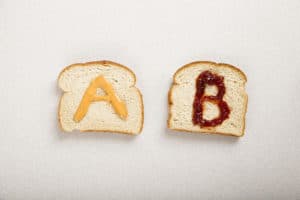
Basic Rules for an Effective Logo
Basic Rules for an Effective Logo
As a web designer, I get all sorts of logos from clients and their partners. Some are great, some are good, and some are downright unusable. As a graphic designer, I am often tasked with creating logos and using them in print pieces. I’ve learned that sometimes the hardest part of creating a logo is educating the client on what makes an effective logo. In this article, I’ll layout exactly what you need to know before working with a designer on your logo. Even if you already have a logo, I’ll give you some tips on how to use it effectively while keeping it’s integrity with your brand.
Why do I need a logo?
I talk to a lot of clients who know they need a logo, but they don’t exactly understand why. They assume they need it because everyone else has one. A logo is the one identifiable thing about your business. It will be the thing that people recognize – it inspires trust, credibility and loyalty. It’s the “aha!” in the viewer’s head that reminds them of their experience with your company. A logo doesn’t do the selling and it doesn’t convince people to buy. It simply identifies your company and symbolizes your product, service, and/or company values.
What makes a good logo?
It needs to be static, unique & easily recognizable.
The logo is an identifiable symbol of your company, so if it’s constantly changing or looks similar to another company’s logo, you stand to lose on the front lines of running a business which is market share. If potential customers can’t remember who you are, they won’t buy.
It should communicate a message and have a concept or meaning.
Logos don’t need to overstate your message, but they should have some meaning to them. It is important to think about the style of your logo. For instance, if you company is in a serious industry such as finance, you want your logo to portray trustworthiness and reliability. A pink cartoon logo is probably not the appropriate way to go in order to evoke that feeling in a potential customer. Color also plays an important role in the concept of your logo. However you shouldn’t rely solely on color. The logo should still convey the same meaning in black or white.
It should be able to printed at any size.
This is the one area that I wish I could education more business owners about. There are two main types of graphics – rasterized and scalable vector. Vector graphics are made up of mathematical equations that dictate the proportions of all of the elements. Vector graphics ensure than no matter how big or small you make the graphic, it will always keep the same proportions and crisp look that you intend it to have. If you are having a logo created you MUST have a vector version. These usually come as .eps, .pdf, or .ai file types.
Rasterized graphics have dimensions that are finalized – meaning they don’t scale without getting fuzzy or pixilated. Rasterized graphics can come in high-resolution so that they can be scaled down easily, but they still lose quality when scaled up. High-resolution rasterized graphics are fine for photos but not for logos.
It needs to be equally effective in one color (preferably black or white).
Full color printing isn’t always an option, so you should make sure your logo can work in one color if needed. A number of scenarios can occur where one color is necessary – such as on faxed documents, embroidered apparel, or something totally out of left field like skywriting!
It needs to be versatile.
Be careful to consider aspect ration when creating a logo. Different marketing materials may need different proportions. For instance, a shallow website header will be more likely to accommodate a horizontal logo, where a vertical banner stand would work better with a vertical logo. You’ll either need to be prepared with 2 versions of your logo or you’ll need to keep as close to a 1:1 aspect ration as possible.
In addition, you should note that a tagline is not part of your logo. However, if you have a tagline or slogan, you should have a plan for how it might look in conjunction with your logo.
It should be memorable & timeless
This about this: can you picture in you mind the McDonald’s logo? How about Starbucks, Nike, or Coca-Cola? These logos are simple and unique enough to be memorable and classic enough to last decades.
Final Tips:
Based on the above principals, the following are some important tips for logo design.
- A photo is not a logo – a photo is not simple or versatile, it cannot be effective in one color, and cannot be created in vector format.
- Avoid special effects such as drop shadows, gradients, and bevels. These are very hard to communicate in one color.
- Try to make the logo as square as possible to avoid poor placement and to ensure versatility.
- Never use clipart – this will take away from the unique quality of your logo.
- Avoid intricate details that can get lost when scaled or presented in black and white.
Need help creating a logo? Contact us today!
Ready to get your project started?
Get your free consultation and pricing quote by filling out our quick ‘request a quote’ form. We’ll answer all of your burning questions and help find the right solution for your project.
Request a Quote



